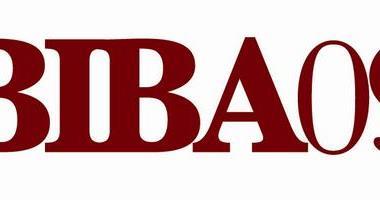Most businesses traditionally have relied on public liability or property insurance to cover their environmental liability. But it’s no longer enough
The environmental debate is an increasingly important factor in shaping the political and corporate landscape. Traditionally, specialist environmental liability insurance has been costly and complicated, with most businesses relying on the cover provided by either public liability or property insurance.
But increasing regulatory scrutiny means that this could prove insufficient. The Biba-approved environmental liability scheme, offered by Gallagher London, aims to cover those risks not currently insured against by existing policies, while also offering brokers access to a growth sector of the market.
Gallagher London director Jo Newson says that environmental liability only began to develop in the UK around 10 years ago, although it’s been established in the US for double that time. “But in the early days, no one here had come up with a feasible, affordable and accessible scheme.”
She says that this changed three or four years ago when a couple of insurers started to make products cheaper and easier to understand. Gallagher “saw the landscape was changing” and developed specialist expertise, allowing companies to add gradual pollution to their public liability portfolio. “That launched us into environmental liability cover.”
Targeting the SME market
The result was a scheme launched in May last year at the Biba conference, primarily aimed at brokers wishing to target the SME market.
This was a direct response to Defra’s Environmental Damage (Prevention and Remediation) Regulations introduced across England in March last year, and later across the rest of the UK. This implemented the EU Environmental Liability Directive (ELD), passed in April 2007, designed to tighten European regulation on pollution incidents and emphasise the ‘polluter pays’ principle.
The ELD may have acted as a trigger, but Newson says that UK legislation had already become sufficiently tight to render most public liability and property products impractical in covering pollution incidents.
“The ELD created a dialogue around legislation and how customers are protected from the consequences of the penalties,” she says. The Bartoline case – when pollutants were released into two watercourses following a fire at the adhesives manufacturer – was also a factor.
The Environment Agency carried out an emergency clean-up and ordered Bartoline to carry out further remedial activity. Its insurer
RSA refused to repay the costs, saying that clean-up costs did not come under its definition of ‘damages’. A court backed this up, as the costs had arisen due to statutory obligation rather than a legal claim for recompense. An appeal was withdrawn following an out-of-court settlement, but the ruling highlighted the exclusions in existing policies that many clients had relied on to cover pollution incidents.
Gallagher then approached ACE Europe to underwrite a product that was SME-focused and not too expensive.
“ACE traditionally has targeted medium to larger brokers but was aware that there was this whole tranche of smaller brokers that it did not have the time or resources to deal with,” says Newson. “So this scheme was perfect for them because it allowed wider access to that market.”
The result is a specialist product for environmental liability that allows most claims
to be processed online, giving brokers a quick, easy way to get quotes and issue policy documents. For more complex risks – for instance, those dealing with properties outside the UK or for larger contracting clients – Gallagher provides an offline wholesaler broker service to Biba members.
Preferential rates
Both online and offline forms of the product offer preferential rates to Biba members, with premiums starting at £400 per policy and excesses from £2,500. It also includes free first-party business interruption cover.
Given the relatively recent nature of the environmental liability market, Gallagher has spent much time educating brokers about both the need for it and the opportunities that it offers.
Newson has overall responsibility for the scheme and is involved with the team that handles offline claims, but environmental sales director Lorraine Thomson has responsibility for showcasing it to Biba members. From October she has taken part in presentations at Biba regional conferences and other market forums, and has hosted monthly web seminar sessions.
As well as going through why the product is necessary, what it does and how it can be accessed, these free sessions identify the wide variety of businesses that can benefit from the scheme. Far from just the traditional manufacturing clients, these include service companies that may use chemicals on-site, such as hotels and dry cleaners, and companies near protected habitats.
“There’s an impression that it is aimed just at the heavier, more hazardous industries like chemicals or steel,” says Thomson. “But few companies are not exposed to environmental liability … that’s one of the things we try to make people understand. It’s not just the big boys that have risks here. Small to medium-sized manufacturers could be liable or, for that matter, potentially any company that uses oil in a heating system.”
Newson thinks that the sheer variety of clients who could, unconsciously, be at risk from insufficient cover around environmental incidents is a good reason for brokers to look at the scheme.
Avoiding court cases
“Errors and omissions protection is a big driver. If this is available and you offer it to them, you could avoid a court case from a client further down the line if they incur a loss as the result of an environmental incident. Even if they don’t take out the insurance, you have the defence that you suggested it.”
But apart from the stick of increasingly strict legislation, both Newson and Thomson see great opportunities for brokers as this section of the market grows.
“Fifteen or 20 years ago directors’ and officers’ liability was an add-on to a public liability policy and only about 20% of the biggest customers had it,” Newson says. “Then it turned into a standalone market and now every publicly traded company purchases it.
“In 10 years, environmental liability will have developed into exactly the same kind of product, where clients automatically have to have it as part of their insurance programmes.”
Thomson says that the green debate is taking centre stage more and more. “This is a new topic that brokers can talk to their clients about and, potentially, use to expand their business.” IT
Hosted by comedian and actor Tom Allen, 34 Gold, 23 Silver and 22 Bronze awards were handed out across an amazing 34 categories recognising brilliance and innovation right across the breadth of UK general insurance.














































No comments yet